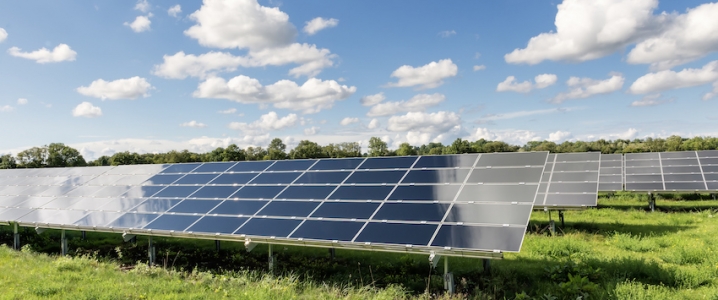Solar makes sense. It’s cost efficient, it’s eco-friendly and has no carbon footprint, electricity is generated in the same grid where it is consumed, and the price of installing panels on residential rooftops is a fraction of what it cost just ten years ago, even after Donald Trump’s prohibitive tariffs slapped on imported solar panels earlier this year. So why hasn’t it taken off?
According to opinion polls the majority of homeowners in the United States like the idea of rooftop solar and love the idea of seeing their electricity bills drop. And indeed, in 2017 overall rooftop solar gigawatts of capacity were almost ten times higher in 2017 than they were in 2010, with more than 2 million US homes now sporting solar panels. However, despite these considerable gains, residential rooftop solar panels still account for less than 1 percent of the United States’ total electricity, and growth has slowed considerably in recent years, with volumes actually dropping by 15 percent in 2017.
While volatility is nothing new for the solar industry, the peaks and valleys of recent years are particularly marked thanks for unpredictable regulation and the inconsistent if not erratic business models of solar energy firms. In some cases regulation has been extremely friendly to solar. Just this month the California Building Standards Commission gave final approval to a mandate requiring new homes to include rooftop solar panels starting in 2020, which will provide a big uptick in demand. This is on top of sizable subsidies, just one of which is a 30 percent federal tax credit. Related: The Biggest Oilmen Of 2018
These generous subsidies, however, are a big part of what makes demand for solar panels so variable. This year the solar industry was confronted with the unpredictable spectre of tax reform and considerable uncertainty of how it would impact the solar sector on the whole. This is compounded by the fact that solar regulations vary greatly state by state, not to mention that the fact that sunlight itself is not a constant.
Solar panels may be cleaner, greener, and cheaper than almost all of the alternatives, but not everyone is happy with that. As homeowners are able to create their own energy and even their excess, the very same diminishing electricity bills they are celebrating are being lamented by the power companies that used to provide that energy for them.
Big power companies are losing out on profits thanks to rooftop solar panels, but still bearing the costly burden of maintaining the power grids. However, if these power companies then raise their rates in an effort to make up for the money lost to solar, they will be punishing those without solar panels, therefore pushing more of their customer base away from traditional power and toward installing solar panels themselves, a classic catch-22. Related: ExxonMobil Faces Off With Venezuela’s Navy
In addition to rankling traditional power companies, rooftop solar incentives and mandates like California’s are not universally popular among energy economists either. To be clear, everyone is in agreement that this will help California make good on its extremely lofty goal of dropping their carbon footprint for energy usage to zero by 2045. Homes built under the new mandate will use approximately 53 percent less energy than homes built under the 2016 standard, and could cut the state’s greenhouse gas emissions by as much as 700,000 metric tons over the next three years, according to projections made by the CEC.
This is all good news, but it will not be cheap, and it’s still not enough. 700,000 metric tons is less than 1 percent of the Golden State’s annual emissions. Furthermore, other green ventures like building more solar and wind farms would be more cost efficient--up to three times cheaper if done correctly and developed in ideal locations--and just as effective.
By Haley Zaremba for Oilprice.com
More Top Reads From Oilprice.com:
- Mnuchin’s Bizarre Statement Rattles Markets
- Turkey Stands Firmly Against U.S. Sanctions On Iran
- Why The Oil Price Bear Market Persists



















As far as CA solar mandate on new builds - it will be cheaper than adding solar after. Comparing it to utility solar is comparing apples you grow and are "free" to apples you buy at the store and have to buy week after week.
As far as transmission infrastructure - this cost should be a separate, reasonable cost broken out by the utility. Not the exaggerated $50/month that utilities want to charge.